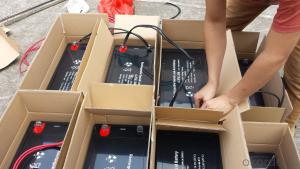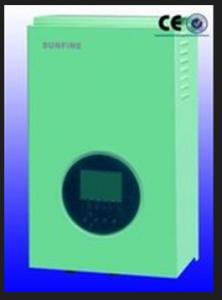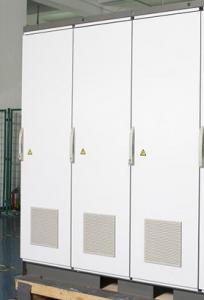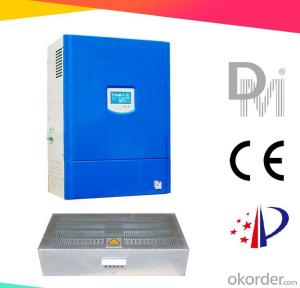2kva Solar Hybrid Inverter
2kva Solar Hybrid Inverter Related Searches
Canopy For Solar Inverter Inverter For Rv Solar Spd For Solar Inverter Solar With Electric Inverter Best Solar Inverter In Kenya Best Solar Inverter In Nigeria Buy Solar Inverter In Nigeria Pcu Mode In Solar Inverter Igbt In Solar Inverter Inverter In SolarHot Searches
Type Of Inverter For Solar Types Of Inverter For Solar Used Solar Inverter For Sale Inverter Size For Solar System Solar Edge Inverter For Sale 5kw Solar Inverter For Sale Solar Inverter For Sale Solar Inverter For Battery Solar Inverter For Split Ac Solar Inverter For Laptop Solar Inverter For Fridge Solar With Inverter Price Solar Inverter With 2 Battery Solar Inverter With Ac Outlet Solar Inverter Price In China Best Solar Inverter In China Solar Inverter Price In Dubai Solar Inverter Price In Uae Solar Inverter Price In Kenya China Mppt Solar Inverter2kva Solar Hybrid Inverter Supplier & Manufacturer from China
Okorder.com is a professional 2kva Solar Hybrid Inverter supplier & manufacturer, offers integrated one-stop services including real-time quoting and online cargo tracking. We are funded by CNBM Group, a Fortune 500 enterprise and the largest 2kva Solar Hybrid Inverter firm in China.Hot Products
FAQ
- A solar inverter handles high temperatures by incorporating advanced thermal management systems such as heat sinks and fans to dissipate heat efficiently. This helps to protect the inverter's sensitive components and maintain optimal operating conditions, preventing any potential damage or performance degradation caused by excessive heat.
- The role of a solar inverter in power factor correction is to convert the direct current (DC) generated by the solar panels into alternating current (AC) that can be used by the electrical grid. In doing so, the solar inverter ensures that the AC power being fed into the grid has a power factor close to unity, which means it is efficient and does not cause any unnecessary strain on the electrical system. This helps to improve the overall power quality and efficiency of the solar energy system.
- Yes, a solar inverter can be used in grid-tied systems. In fact, a grid-tied system requires a solar inverter to convert the DC power generated by the solar panels into AC power that can be fed into the electrical grid. The solar inverter also ensures that the system synchronizes with the grid and complies with safety regulations.
- The maximum efficiency at partial load for a solar inverter refers to the highest level of efficiency that can be achieved when the inverter is operating at less than its full capacity. This efficiency is typically lower than the maximum efficiency at full load, as the inverter may not be able to convert the same amount of energy with the same level of efficiency when it is not running at its maximum capacity.
- Yes, a solar inverter can be used with a remote monitoring system. In fact, many solar inverters are designed to be compatible with remote monitoring systems, allowing users to monitor their solar energy production, system performance, and troubleshoot any issues remotely. This enables better control and management of the solar power system, ensuring optimal efficiency and performance.
- The maximum DC input voltage for a solar inverter typically depends on the specific model and manufacturer. However, in general, most solar inverters have a maximum DC input voltage ranging from 600 to 1000 volts.
- Temperature has a significant impact on the performance of a solar inverter. As temperature increases, the efficiency of the inverter tends to decrease. This is primarily due to the fact that high temperatures can lead to increased resistive losses within the inverter's components, resulting in reduced overall efficiency. Additionally, excessive heat can cause the inverter to experience thermal stress, leading to potential malfunctions or even failures. Therefore, it is crucial to consider temperature management and cooling measures to optimize the performance and lifespan of a solar inverter.
- A central inverter is a type of inverter that is used in large-scale solar installations. It takes the direct current (DC) electricity generated by multiple solar panels and converts it into alternating current (AC) electricity that can be used to power homes or businesses. A central inverter is typically located in a central location, such as a utility room or basement. On the other hand, a string inverter is a type of inverter that is used in smaller-scale solar installations. It also converts DC electricity from multiple solar panels into AC electricity, but it does so at the string level. This means that each string of solar panels has its own dedicated inverter. String inverters are usually installed near the solar panels themselves, which can make them more convenient for maintenance and troubleshooting. In summary, the main difference between a central inverter and a string inverter is the scale of the solar installation they are used in and their physical location. Central inverters are used in larger installations and are located centrally, while string inverters are used in smaller installations and are located near the solar panels.











































